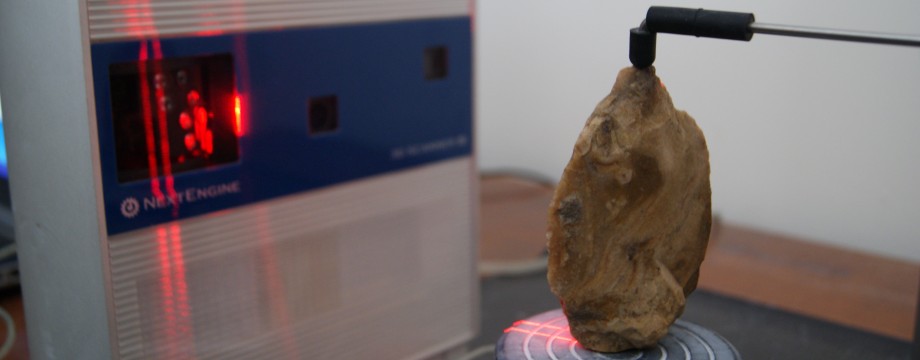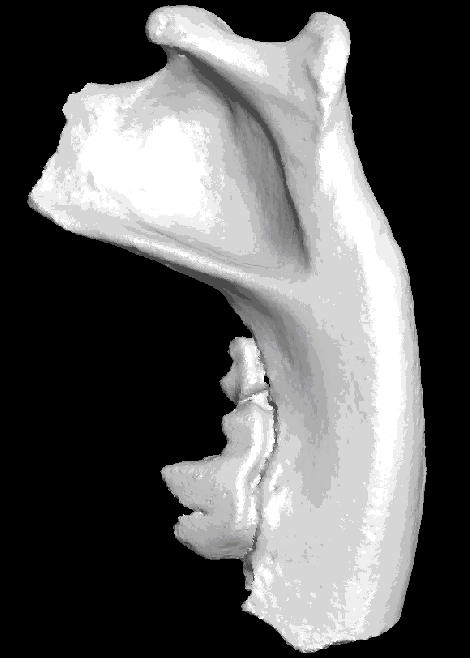by Bernard K. Means, Director of the Virtual Curation Laboratory (VCL)
 Today’s animation is a clay smoking pipe that was made and used by the Susquehannock Indians during the early 1600s A.D. It represents a canine and may have been a totem animal.Ethnohistorian Matthew T. Bradley has suggested to VCL that this animal may be a fox, as the Fox clan has been documented historically among the Susquehannock (Bradley 2008:4). Unlike other smoking pipes of this period that we have scanned in the VCL, this canine looks at the smoker rather than facing away. The pipe was recovered from a deep silo-shaped pit of the Funk Phase period (ca 1400-1550 AD.) at the Shenks Ferry (36LA2) site and is within the archaeological collections of The State Museum of Pennsylvania. A video produced for Instagram by Archaeology in the Community in the Virtual Curation Laboratory features the VCL’s Digital Zooarchaeologist Mariana Zechini discussing the smoking pipe, using a printed version made with a MakerBot Replicator. The InstaGram video can be found here: http://instagram.com/p/jqMNtHqqSD/#
Today’s animation is a clay smoking pipe that was made and used by the Susquehannock Indians during the early 1600s A.D. It represents a canine and may have been a totem animal.Ethnohistorian Matthew T. Bradley has suggested to VCL that this animal may be a fox, as the Fox clan has been documented historically among the Susquehannock (Bradley 2008:4). Unlike other smoking pipes of this period that we have scanned in the VCL, this canine looks at the smoker rather than facing away. The pipe was recovered from a deep silo-shaped pit of the Funk Phase period (ca 1400-1550 AD.) at the Shenks Ferry (36LA2) site and is within the archaeological collections of The State Museum of Pennsylvania. A video produced for Instagram by Archaeology in the Community in the Virtual Curation Laboratory features the VCL’s Digital Zooarchaeologist Mariana Zechini discussing the smoking pipe, using a printed version made with a MakerBot Replicator. The InstaGram video can be found here: http://instagram.com/p/jqMNtHqqSD/#
Reference cited:
Bradley, Matthew Timothy
2008 The development of Iroquoian clans. Paper presented at the Conference on Iroquois Research, Rensselaerville, N.Y., October 3–5, 2008. Available online at: https://db.tt/bkN43h3k










